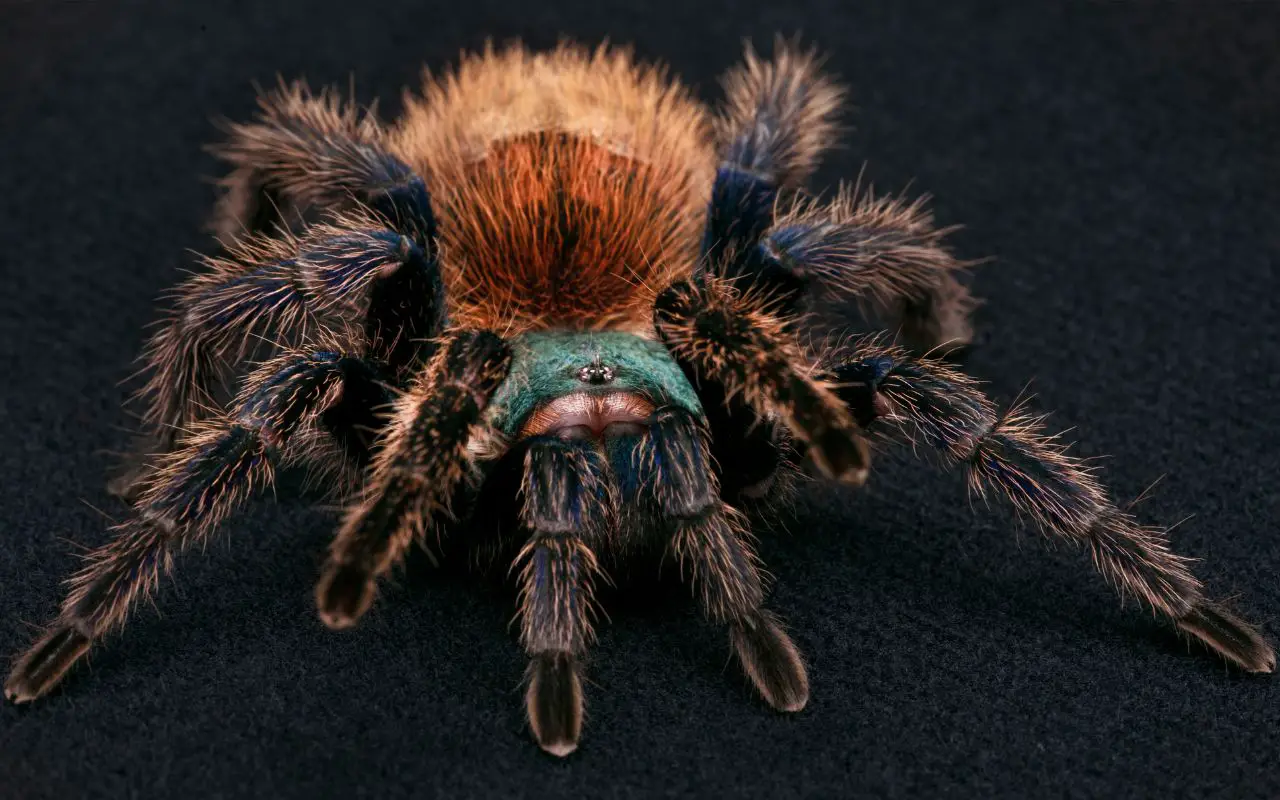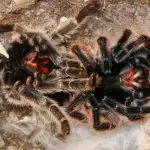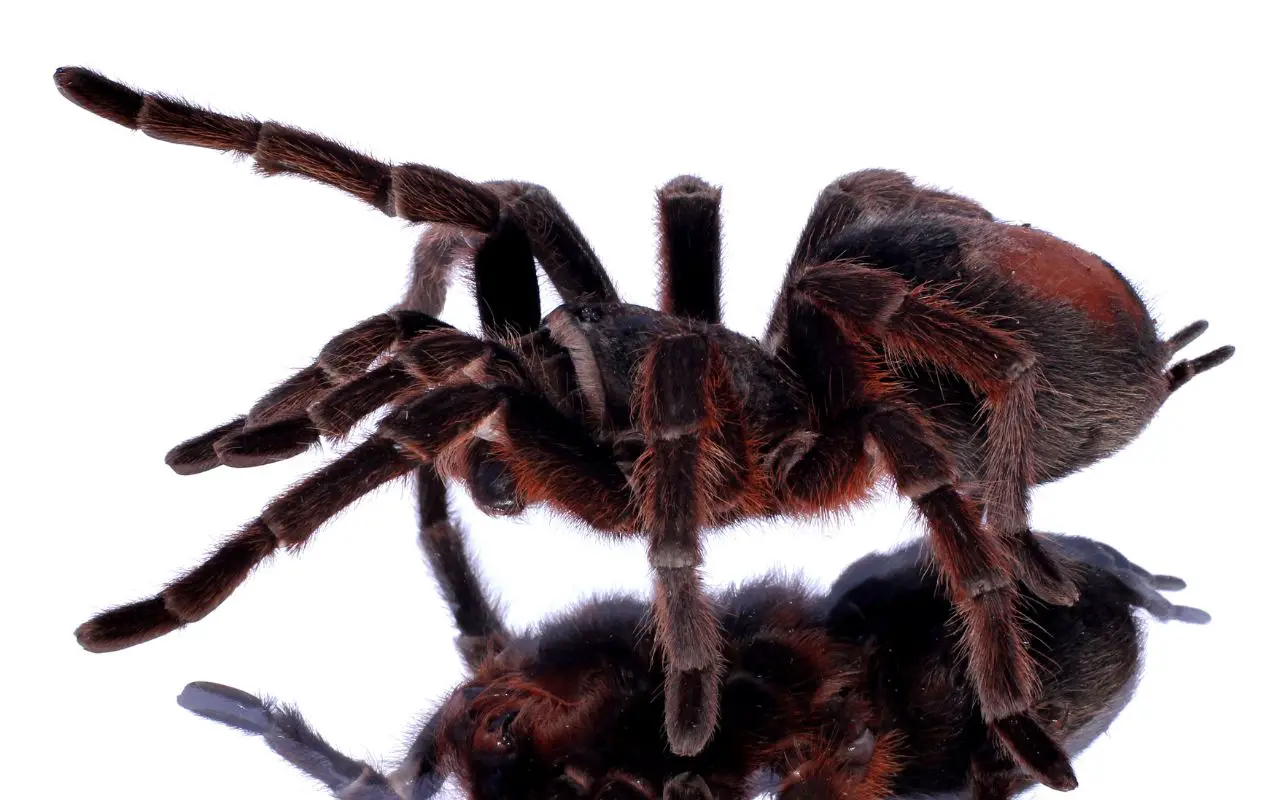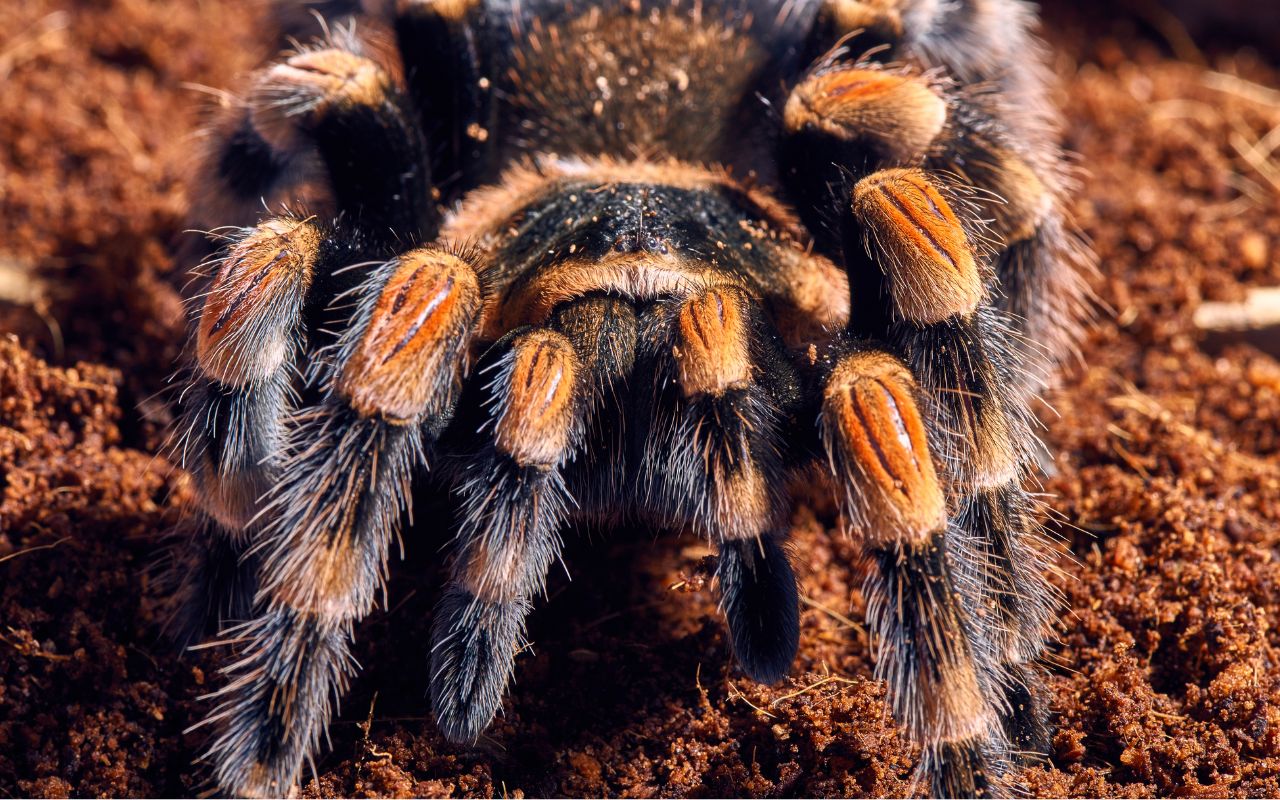The Cobalt Blue Tarantula (Cyriopagopus lividum) is a medium-sized terrestrial spider from southeast Asia. Its bright coloration and web-building habits make it an unusual but fascinating pet and have gained it considerable popularity amongst arachnid keepers. Like many tropical species, its husbandry is simple so long as you maintain good substrate humidity.
In this guide, I’ll provide you with all the essential information you need to ensure the well-being of your Cobalt Blue Tarantula. From setting up the perfect enclosure to managing their diet and handling, we’ll cover it all.
Cobalt Blue Tarantula natural history
The Cobalt Blue Tarantula, also known as the “Electric Blue Tarantula,” is a species native to the rainforests of Southeast Asia. What makes them truly fascinating is their vibrant cobalt blue coloration, contrasting with their jet-black legs.
While their appearance is captivating, it’s crucial to understand their natural habitat and behavior to provide a suitable captive environment. Their lifestyle is mostly fossorial in the wild, so they need plenty of substrate to dig in.
They also tend to build a lot of webbing around their burrows, and come out to forage. This means they also need plenty of space above ground to explore, too.
In terms of size, this species gets to around 5 inches in legspan, with females being larger and chunkier than males. Many males also seem to turn a light gray when mature, and the stunning blue coloration is at its best in females.
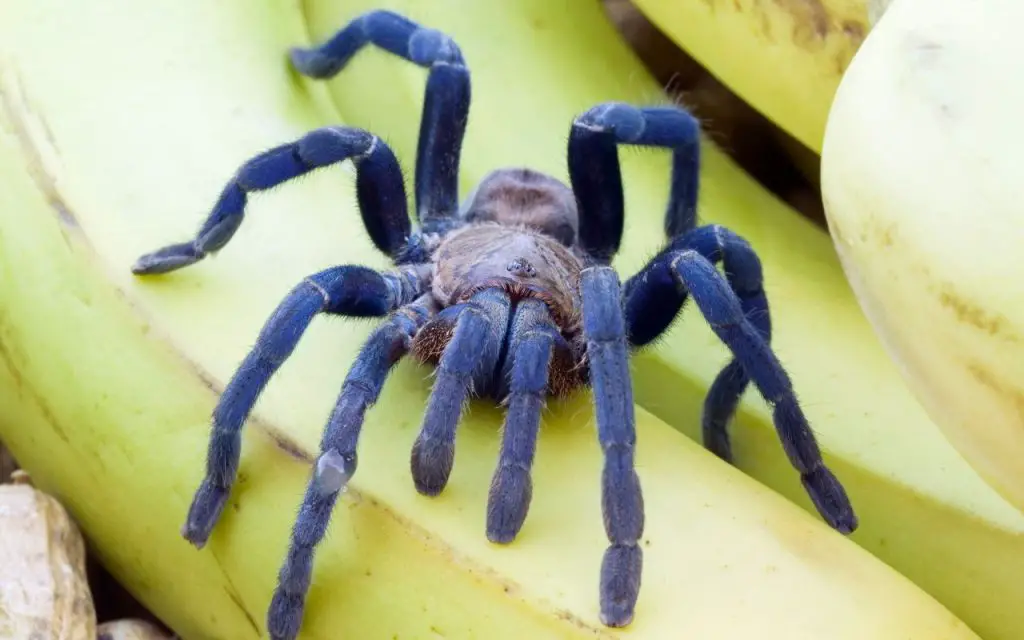
Enclosure Setup
Creating an ideal enclosure is vital for the well-being of your Cobalt Blue Tarantula. Personally, I like acrylic enclosures, but you may want to opt for a10 or 20 gallon glass tank for an adult. Acrylique enclosures of this size are either hard to find or super expensive.
Obviously a lot of glass tanks come with mesh tops, which isn’t great for humidity! I recommend covering two-thirds of the top with some plastic to help with this.
As you may well know, 10 to 20 gallons is huge for a tarantula enclosure, but this species loves burrowing! Any time I’ve tried keeping one in less than 7 or 8 inches of substrate it just looked miserable. They will just continuously dig in different spots trying to find somewhere they can dig deeper.
Check out the enclosure options below:
Substrate
Obviously for a burrowing species, you need a substrate that will stick together well. There’s nothing more frustrating for a hard-working tarantula than having its burrows collapse around it!
There’s a couple of substrate options you can use for the Cobalt Blue:
- A mix of peat moss and vermiculite to maintain humidity levels. One example being Josh’s Frogs Dig It (my personal favorite) This is a great substrate for tarantulas and other inverts, and holds together well for burrowing.
- Coco coir, such as Eco Earth. Coco coir is absolutely great at maintaining humidity. It also sticks together really well, which helps your spider maintain its burrows.
I’ve listed both options below for you:
Temperature and Humidity
Maintain temperatures between 75-82°F (24-28°C) during the day, with a slight drop at night. As with most tarantulas, keeping the temperature at near room temperature is fine.
If your house gets colder than 75F at night, however, I recommend putting a radiator in the room where you keep your tarantula(s). Alternatively, you can stick a 5 watt heat mat to the side of its enclosure.
This option does risk drying out the substrate though – so needs to be monitored very carefully! Again, I would only recommend doing this if you live somewhere with very cold winters. A radiator in the room really is the better option.
Ambient humidity levels should be around 75-80%. That said, this species gets most of its humidity through direct contact with its substrate. Always keep the substrate slightly damp to the touch, but not so wet that water comes out if you squeeze it.
At the same time, I recommend leaving a very shallow dish of clean water in the enclosure in case you spider wants to drink.
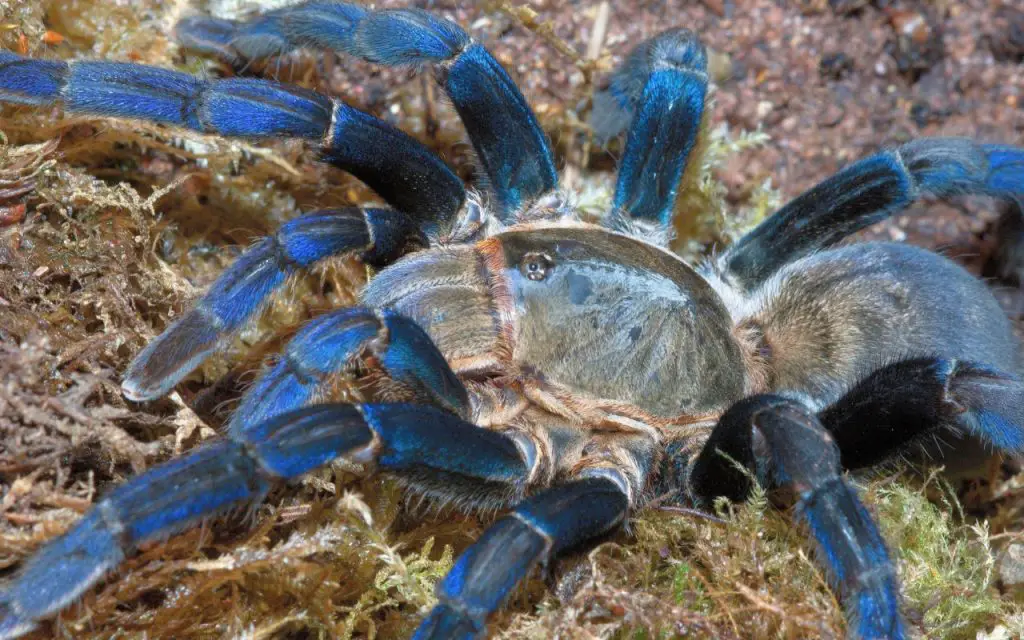
Hiding Places
Offer appropriate hiding spots such as half logs, cork bark, or commercial hides. These shelters provide your tarantula with additional places to hide and explore.
Even though it will spend most of its time hiding, your Cobalt Blue will occasionally explore above-ground hiding places and even cover them in web. Hiding places can also be in the form of decoratiosn that make the enclosure look good.
In the past, I’ve used:
- cork bark
- fake skulls
- fake plants
- resin logs/bark hideouts
Feeding and Diet
Cobalt Blue Tarantulas are great feeders that are quite fun to watch eating. You can feed them a diet of appropriately-sized live insects such as crickets, roaches, and mealworms. Other, slightly less widely available options include:
- Hornworms
- Superworms
- Pinkie mice
- Waxworms
- Locusts
When it comes to the size of prey, they should only be about the size of your spider’s abdomen at the most. Offering crickets that are too large, for example, can make them more likely to fight back and injure your pet. This is especially true when feeding spiderlings.
Also, I recommend that you remove any uneaten prey as it can annoy and even try to nibble your spider. The best way to remove it is with a pair of long feeding tongs. Remember, even superworms can eventually turn into beetles that will bite your spider.
Feeding Schedule:
Adult Cobalt Blue Tarantulas can be fed every 7-10 days, while spiderlings require smaller meals more frequently. Signs of an underfed tarantula include a very small abdomen in proportion to the cephalorax (head). For overfed spiders, the opposite will be the case.
Gut Loading
Ensure the prey items are well-fed and properly gut-loaded to provide optimal nutrition for your tarantula. The best way to do this is to get some vitamin powder and do it yourself. You just keep the prey for a few days and feed it to them before giving them to your spider.
Alternatively, some pet stores and live foods suppliers gut load their crickets and mealworms before selling them. Not all them do though, so be sure to ask!
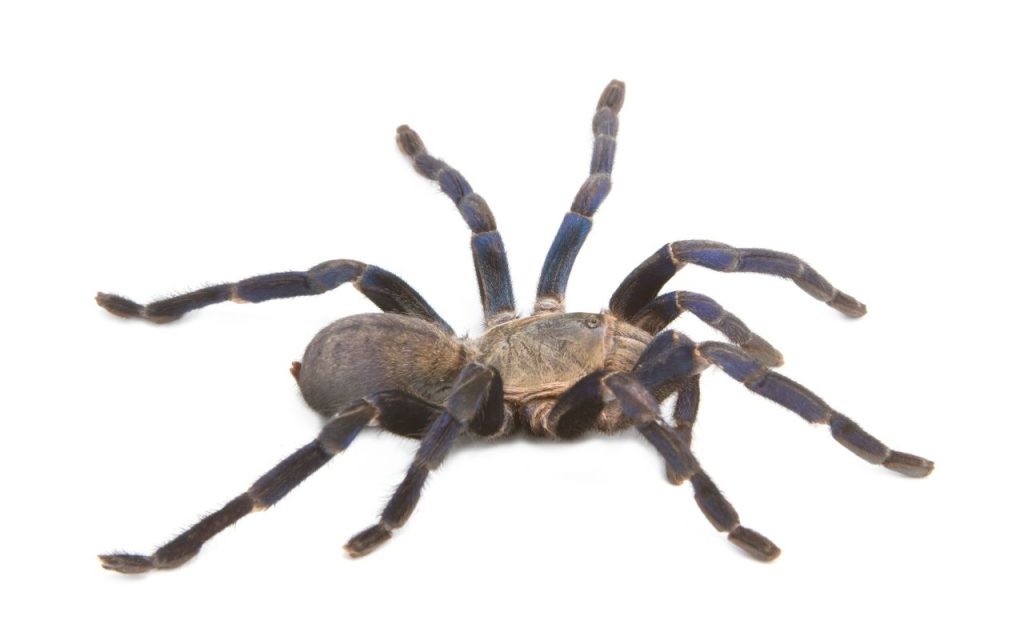
Hygiene and Health
As with most invertebrates, there isn’t much you need to do to keep your Cobalt Blue Tarantula healthy. The real main point really is to provide gut loaded prey, like we’ve just seen above.
That said, you should still keep their enclosure clean, and remove dead prey boluses (mash up bits) on a regular basis. Every 6 months to a year, it’s also a good idea to completely change the substrate.
The main health issue that you need to watch out for is molting. At this time, your tarantula will stop eating, and spend at least 8 hours molting its skin, before growing a shiny new exoskeleton.
You must never disturb or feed your tarantula while its molting, as this could have serious consequences! You also need to make sure the substrate is humid enough to help the process. If the substrate is too dry, your spider could literally die during the process.
When it comes to lifespan, it is true that Cobalt Blue Tarantulas don’t live as long as many other big spiders. Nonetheless, females can reach 10 to 12 years of age, which isn’t bad for any pet if you ask me.
Handling and Safety
Myself, I haven’t been bitten by a Cobalt Blue. I have been told by very reliable sources, however, that the bite is very painful! One person told me that they had muscle spasms for two weeks after an incident where they got bitten twice. It’s also worth noting that these tarantulas are very fast.
I do not recommend handling this species – ever. They really are a pet to be seen, not touched. If you need to re-house your spider, guide into into another container by gentle prodding it with a soft paintbrush or something similar.
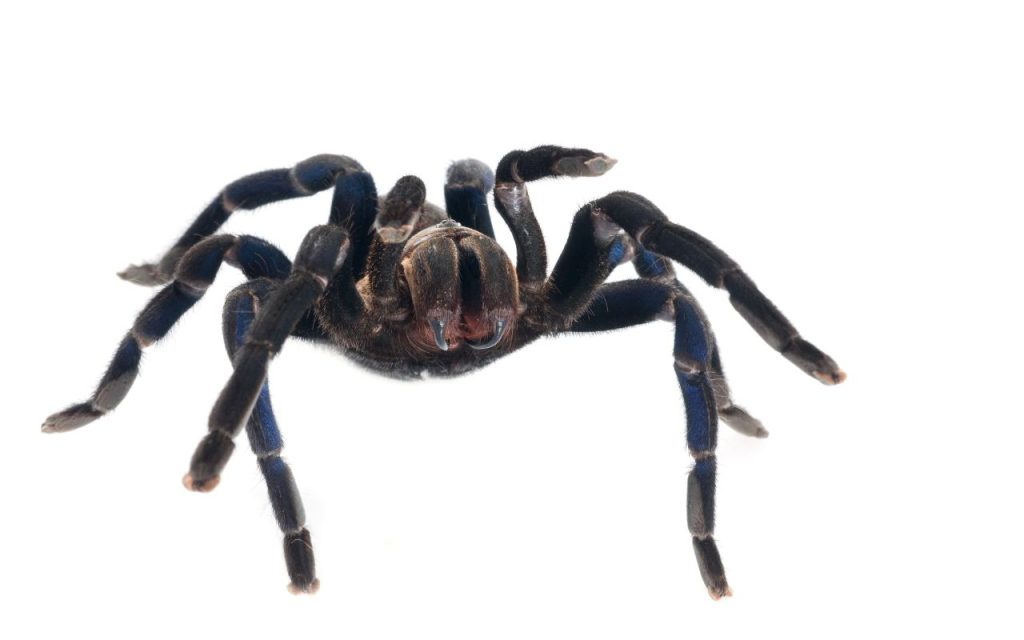
Final thoughts
The Cobalt Blue is not one of the best pet tarantulas for beginners! It is a very cool animal, though. Personally, I think it is a great species to make part of a slightly more experienced keepers collection.
Why I like this species:
- the blue coloration is amazing!
- they are great feeders
- they are hardy
- unlike New World species, they don’t have urticating hairs
Things to consider before getting one:
- some of them spend a lot of time hiding
- they tend to be defensive. Some will bite, while others will make a break for freedom anytime they can
- they are fast moving, and accidentally dropping them during re-housing is a potential risk
- according to some sources, their bite is painful and may cause muscle spasms
FAQ about the Cobalt Blue Tarantula:
Are cobalt blue tarantulas fast?
In my experience, Cobalt Blue Tarantulas are very, very fast. This makes handling and moving them difficult, especially as they tend to be highly defensive and likely to bite. Handling is only recommended if you need to re-home your spider, in which case you should use gloves and containers rather than your hands.
What happens if a cobalt blue tarantula bites you?
If a Cobalt Blue Tarantula bites you, you’ll experience medium-to-intense pain at the site for anywhere from 24hrs to over a week. Whilst their venom isn’t life-threatening (unless you’re allergic), it can cause unpleasant symptoms like muscle spasms. These spasms may even be in other parts of your body, not just near the bite.

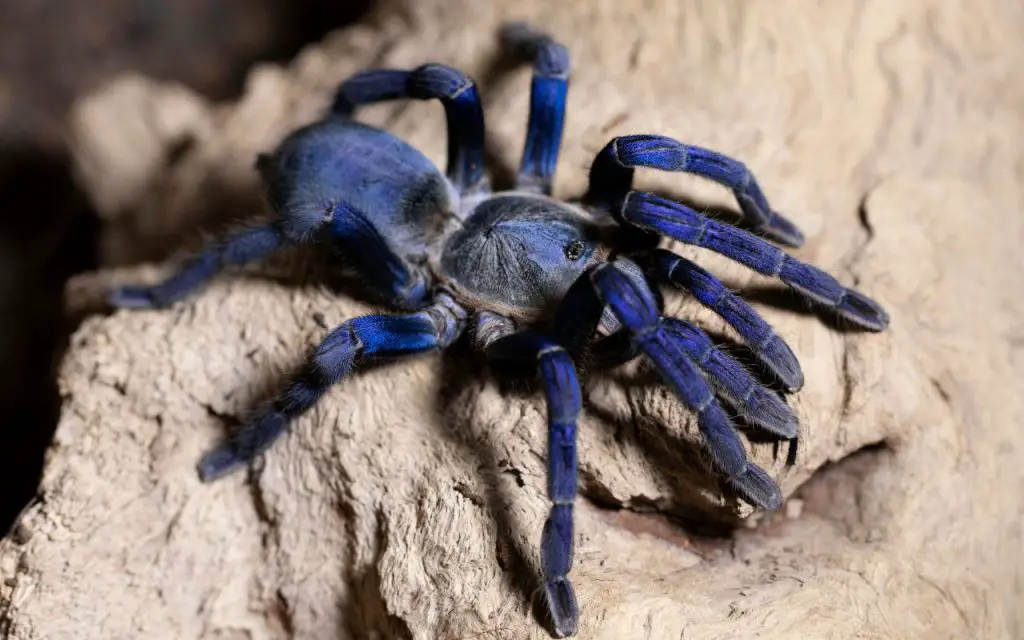
 20 Gallon Mesh top tank
20 Gallon Mesh top tank 15 Gallon Mesh top tank
15 Gallon Mesh top tank Josh’s Frogs Dig It
Josh’s Frogs Dig It Zoo Med Eco Earth
Zoo Med Eco Earth Aquarium resin skull
Aquarium resin skull Exo Terra plastic terrarium plant
Exo Terra plastic terrarium plant Zilla bark bends
Zilla bark bends Zoo Med Labs feeding tongs
Zoo Med Labs feeding tongs